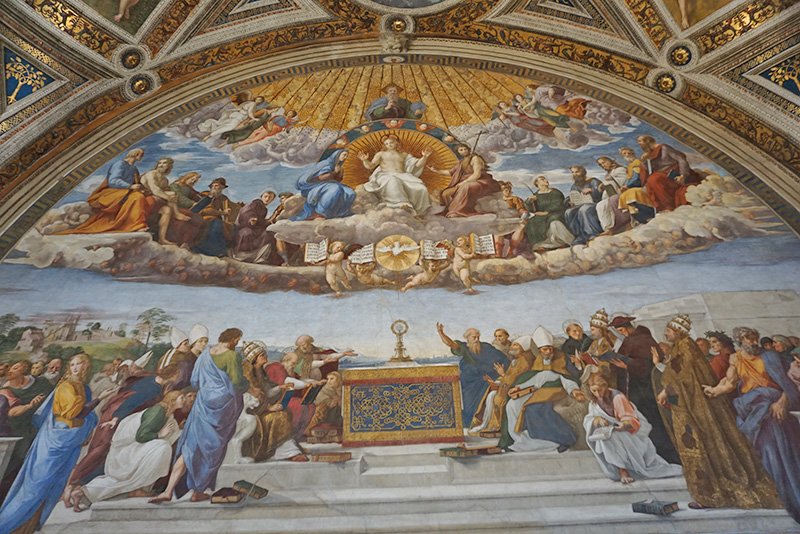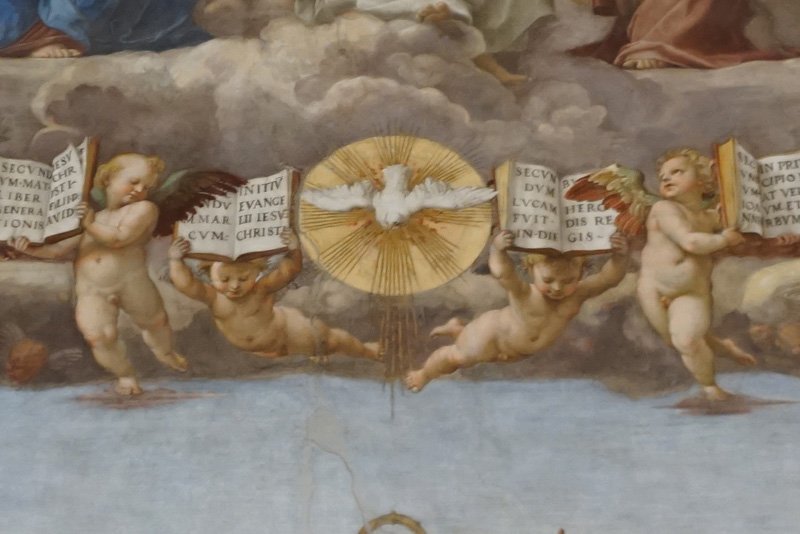Raphael’s School of Athens
Raphael’s fresco The School of Athens has come to symbolize the marriage of art, philosophy, and science that was a hallmark of the Italian Renaissance. Painted between 1509 and 1511, it is located in the first of the four rooms designed by Raphael, the Stanza della Segnatura.
Who are the figures in The School of Athens?
Plato (Leonardo da Vinci) and Aristotle
“The two main figures in the work are placed directly under the archway and in the fresco’s vanishing point, a compositional trick to draw the viewer’s eye to the most important part of the painting. Here, we see two men who effectively represent the different schools of philosophy—Plato and Aristotle.
An elderly Plato stands at the left, pointing his finger to the sky. Beside him is his student Aristotle. In a display of superb foreshortening, Aristotle reaches his right arm directly out toward the viewer. Each man holds a copy of their books in their left hand—Timaeus for Plato and Nicomachean Ethics for Aristotle…
Conversely, Aristotle’s hand is a visual representation of his belief that knowledge comes from experience. Empiricism, as it is known, theorizes that humans must have concrete evidence to support their ideas and is very much grounded in the physical world.
Scholars argue that this divide in philosophies, placed at the center of The School of Athens, is the core theme of the painting.
So who is everyone else? It’s not always crystal clear, as Raphael doesn’t arm all his characters with attributes that give away their identity. Fortunately, there are quite a few that scholars can agree on…” [read more…]
Heraclitus (Michaelangelo)
“One of the most striking figures in the composition is a brooding man seated in the foreground, hand on his head in a classic “thinker” position. This figure doesn’t show up in Raphael’s preliminary drawings and plaster analysis shows that it was added later…
Long thought to be a portrait of Michelangelo himself, the brooding nature would have matched the artist’s character. In the realm of philosophers, he is Heraclitus, a self-taught pioneer of wisdom. He was a melancholy character and did not enjoy the company of others, making him one of the few isolated characters in the fresco.” [read more…]
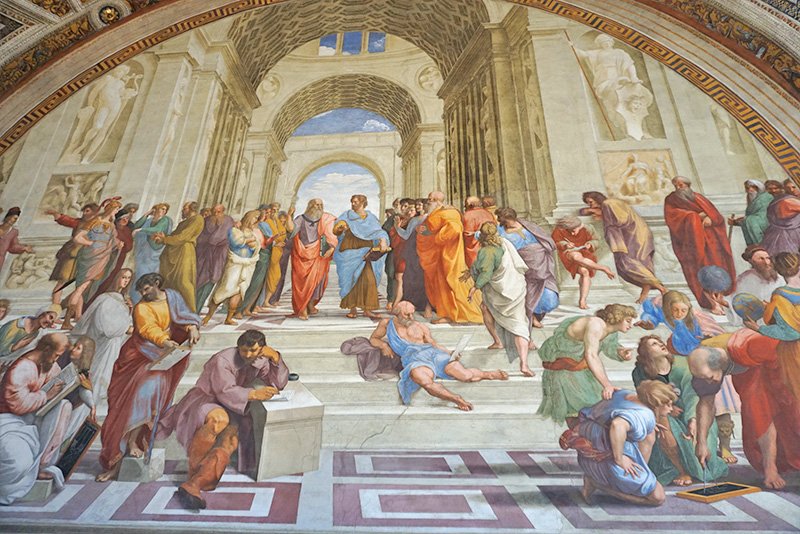

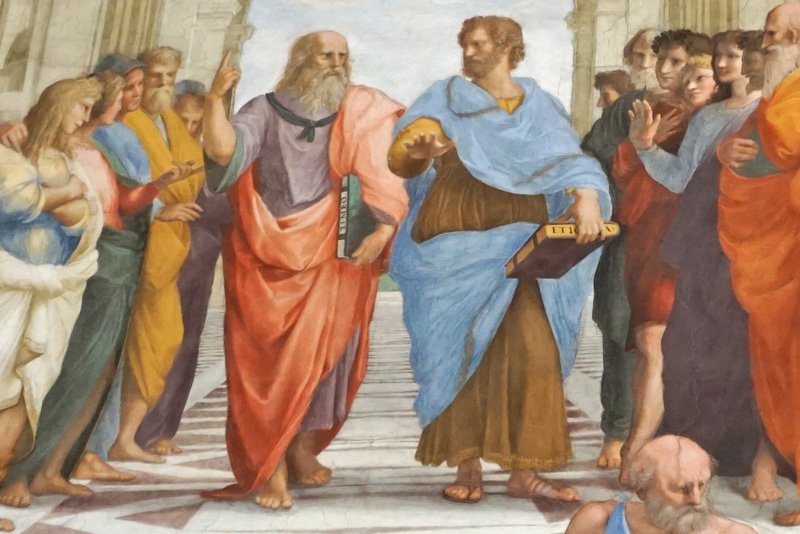

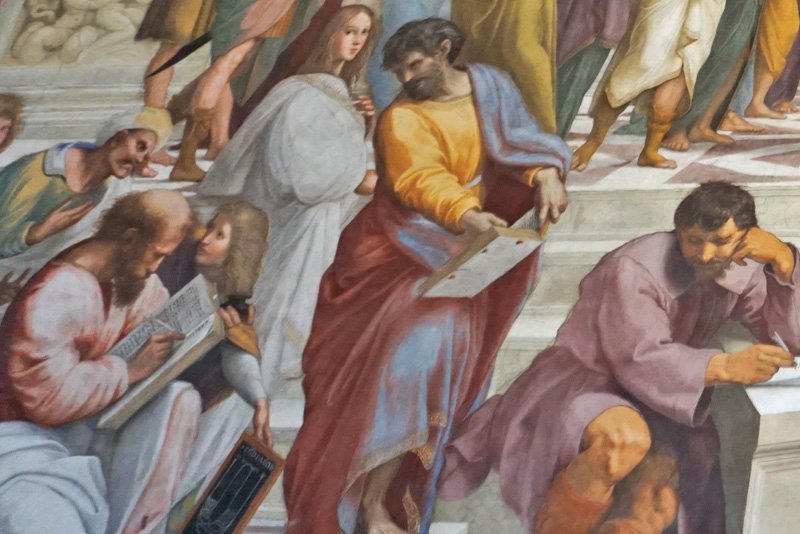
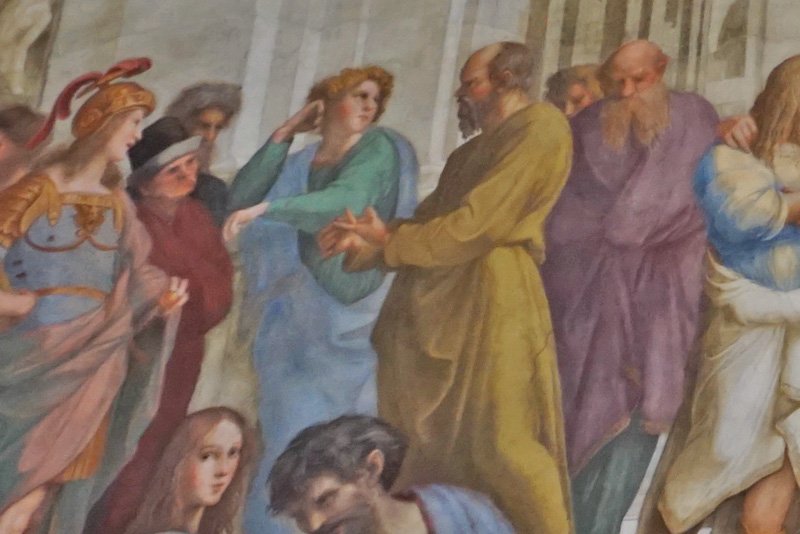
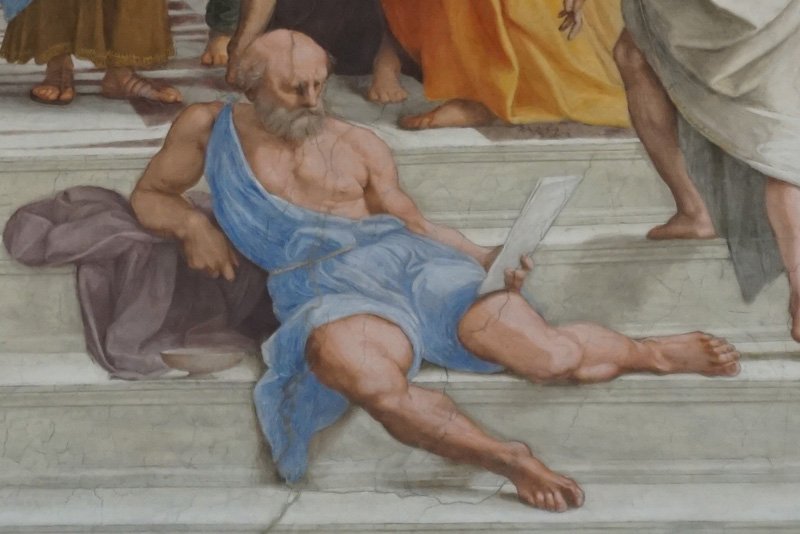
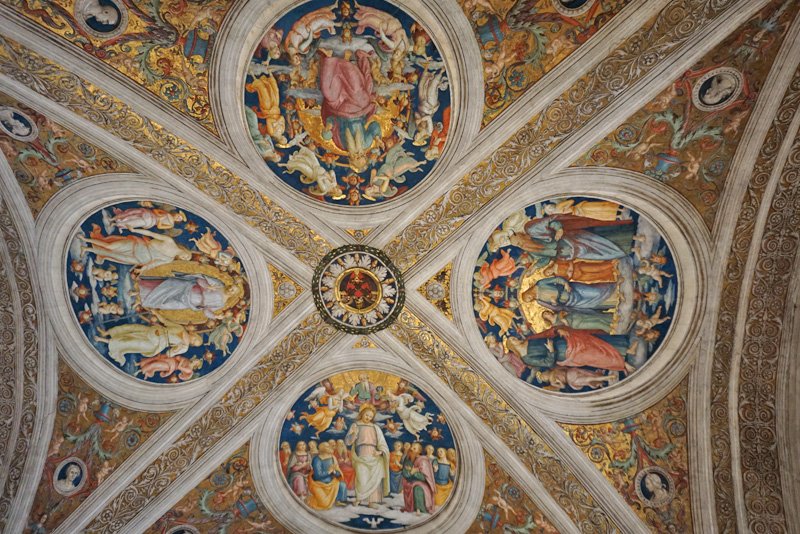
Disputation over the Most Holy Sacrament
“On the wall opposite the School of Athens, corresponding to Theology, is the fresco of the so-called Disputation of the Most Holy Sacrament, the title of which should more rightly be that of the Triumph of Religion.
At the sides of the Most Holy Trinity (with God the Father, Christ between the Virgin and St John the Baptist, and the Holy Spirit in the center) is the Triumphant Church, with patriarchs and prophets of the Old Testament alternated with apostles and martyrs, seated in a hemicycle on the clouds.
The personages are (from left to right for the viewer). St Peter, Adam, St John the Evangelist, David, St Laurence, Judas Maccabees, St Stephen, Moses, St James the elder, Abraham, St Paul. [read more…]
